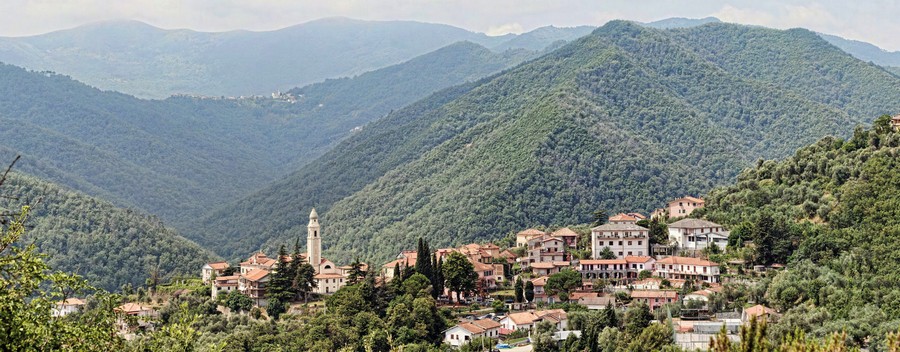Altitude: 350 m a.s.l.
Area: 24.23 sq km
Distance from Imperia: 33 km
Inhabitants: in 1881: 1904 - in 2017: 732
Patron Saint Day: September 2nd - Sant'Antonino
Information: Municipality phone 0182 74014
The primary agricultural center of Casanova was initially included in the Albenga Committee and, starting from the tenth century, in the subsequent Marca Aleramica, under the dominion of the Marquises of Clavesana and Del Carretto.
In 1379 in Zuccarello was born the famous Ilaria, whose father Carlo officially took the title of marquis of Zuccarello and Stellanello, already controlling the territories between Aquila d'Arroscia and Balestrino.
Except for brief interludes with the Savoys, Casanova was always in the Genoese orbit, following its fate until 1797 when the French included it in the Montenotte department.
In 1815 Casanova was incorporated into the Kingdom of Sardinia, as established by the Congress of Vienna and, from 1861, into the Kingdom of Italy; with Royal Decree n. 1234 of 8 April 1863 it took the name of Casanova Lerrone.
From 1859 to 1926 the territory was included in the third district of Andora in the area of Albenga, in the province of Genoa; in 1927 with the suppression of the Albenga district it passed under the newly established province of Savona.
It has been a member of the Western Savonese Mountain Community until 2011.
Visit of the town
In the first hamlet that you’ll encounter on the descent, Vellego, you’ll find the parish church of San Giuliano di Alvernia, whose organ is dated 1882 and is the work of the organ-maker Angelo Dessiglioli, active in the second half of the 1800s.
Near the church you can see the remains of the fortified quadrangular Torre di Ubaga.
Continuing your descent, you’ll encounter the hamlet of Degna and the parish church of San Luca with its beautiful bell tower.
There stands the Sanctuary of Our Lady of the Visitation of the seventeenth century, built on the site of the Marian apparition to a deaf-mute shepherdess (who regained the use of speech, as handed down by the local tradition); the sanctuary contains a wooden group attributed to the sculptor Anton Maria Maragliano of the late 17th century.
Continue to Casanova Lerrone where you’ll find the fortification built by the Dorias.
On the same street, a few steps beyond the Town Hall, you’ll see the apse of the parish church of Sant'Antonino. Erected in Baroque style, it preserves a polyptych of 1552 attributed to the painting school of the Breas and an anonymous marble group depicting the scene of the Apparition.
Going back a few hundred meters, take the junction to Marmoreo where you can admire splendid olive trees, still of Taggiasca variety; they are the last ones of the west towards east.
Continuing on to Garlenda, on the left, there is a small road that leads to Maremo where there are the remains of ancient fortifications of the Del Carrettos.
In the small church of San Bernardo, between the Lerrone and Arroscia valleys, visit the funeral monument by the German sculptor Rainer Kriester to Felice Cascione, a partisan who died in battle and the lyricist of the famous hymn of the resistance:
"The wind whistles, the storm cries, broken shoes and yet we must go and conquer the red spring where the sun of the future rises".
Continuing towards Albenga, cross Garlenda where you can see the Church of the Nativity with an octagonal dome.
After the last houses and before the golf course, a short dirt road leads to the Costa del Carretto fortress house. Head towards Villanova D'Albenga.


